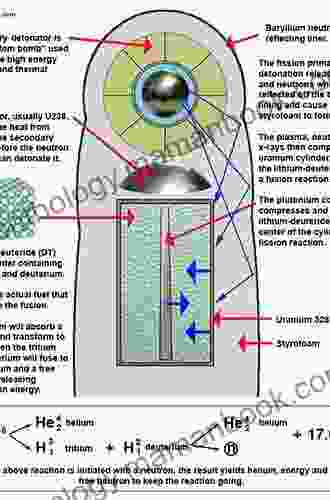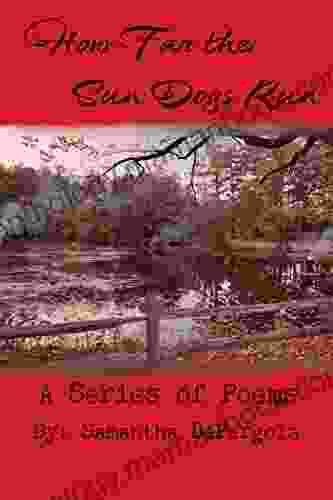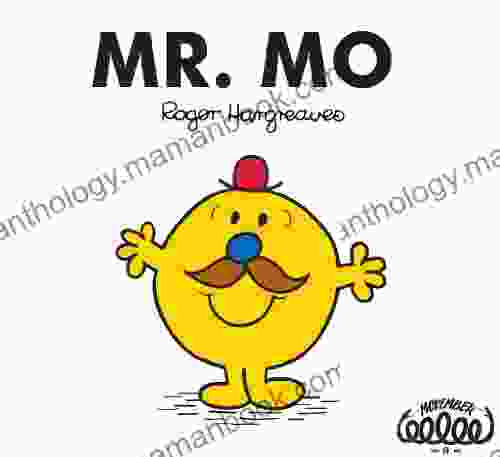Dark Sun: The Making of the Hydrogen Bomb

The hydrogen bomb is a weapon of mass destruction that uses the energy released by nuclear fusion to create a devastating explosion. It is far more powerful than the atomic bomb, which uses the energy released by nuclear fission. The development of the hydrogen bomb was a major scientific and technological achievement, but it also had a profound impact on the course of world history.
4.6 out of 5
| Language | : | English |
| File size | : | 47513 KB |
| Text-to-Speech | : | Enabled |
| Screen Reader | : | Supported |
| Enhanced typesetting | : | Enabled |
| Word Wise | : | Enabled |
| Print length | : | 768 pages |
The story of the hydrogen bomb begins in the early 1920s, when scientists first began to explore the possibility of using nuclear fusion to create a bomb. In 1939, German scientists Otto Hahn and Fritz Strassmann discovered nuclear fission, and this discovery led to the development of the atomic bomb. However, the atomic bomb was not powerful enough to be a decisive weapon, and scientists began to look for ways to create a more powerful bomb.
In 1942, American physicist Edward Teller suggested that a hydrogen bomb could be created by using the energy released by nuclear fusion to ignite a secondary fission bomb. This concept was later developed by a team of scientists at the Los Alamos National Laboratory, led by Teller and J. Robert Oppenheimer. The first hydrogen bomb was successfully tested on November 1, 1952, at Eniwetok Atoll in the Pacific Ocean. The bomb, which was code-named "Ivy Mike," had a yield of 10.4 megatons, which was more than 1,000 times more powerful than the atomic bombs that had been dropped on Hiroshima and Nagasaki.
The development of the hydrogen bomb had a profound impact on the course of world history. It led to a new arms race between the United States and the Soviet Union, and it increased the risk of nuclear war. The hydrogen bomb also had a significant impact on the development of nuclear power. In the 1950s and 1960s, a number of nuclear power plants were built around the world, and these plants use the same technology as the hydrogen bomb to generate electricity.
The hydrogen bomb is a powerful weapon that has had a profound impact on world history. It is a symbol of the destructive power of nuclear weapons, and it is a reminder of the dangers of nuclear war. The development of the hydrogen bomb is a story of scientific and technological achievement, but it is also a story of human folly.
The Science of the Hydrogen Bomb
The hydrogen bomb is a nuclear weapon that uses the energy released by nuclear fusion to create a devastating explosion. Nuclear fusion is the process of combining two atomic nuclei to form a single nucleus, and this process releases a great amount of energy. The hydrogen bomb uses the energy released by the fusion of two deuterium nuclei to ignite a secondary fission bomb. Deuterium is a heavy isotope of hydrogen, and it is found in small amounts in ordinary water.
The first step in the process of creating a hydrogen bomb is to create a deuterium-tritium gas. Deuterium is a heavy isotope of hydrogen, and tritium is a radioactive isotope of hydrogen. The deuterium-tritium gas is then compressed and heated until it reaches a high temperature and pressure. At this point, the deuterium and tritium nuclei fuse together to form a helium nucleus and a neutron. The fusion of the deuterium and tritium nuclei releases a great amount of energy, which is used to ignite a secondary fission bomb.
The secondary fission bomb is a conventional nuclear bomb that uses the energy released by nuclear fission to create a devastating explosion. The fission bomb is typically made of uranium or plutonium, and it is detonated by a neutron. The neutron causes the uranium or plutonium nuclei to split apart, and this process releases a great amount of energy. The energy released by the fission bomb is used to create a shock wave and a fireball, which can cause widespread destruction.
The Impact of the Hydrogen Bomb
The development of the hydrogen bomb had a profound impact on the course of world history. It led to a new arms race between the United States and the Soviet Union, and it increased the risk of nuclear war. The hydrogen bomb also had a significant impact on the development of nuclear power. In the 1950s and 1960s, a number of nuclear power plants were built around the world, and these plants use the same technology as the hydrogen bomb to generate electricity.
The hydrogen bomb is a powerful weapon that has had a profound impact on world history. It is a symbol of the destructive power of nuclear weapons, and it is a reminder of the dangers of nuclear war. The development of the hydrogen bomb is a story of scientific and technological achievement, but it is also a story of human folly.
4.6 out of 5
| Language | : | English |
| File size | : | 47513 KB |
| Text-to-Speech | : | Enabled |
| Screen Reader | : | Supported |
| Enhanced typesetting | : | Enabled |
| Word Wise | : | Enabled |
| Print length | : | 768 pages |
Do you want to contribute by writing guest posts on this blog?
Please contact us and send us a resume of previous articles that you have written.
 Top Book
Top Book Novel
Novel Fiction
Fiction Nonfiction
Nonfiction Literature
Literature Paperback
Paperback Hardcover
Hardcover E-book
E-book Audiobook
Audiobook Bestseller
Bestseller Classic
Classic Mystery
Mystery Thriller
Thriller Romance
Romance Fantasy
Fantasy Science Fiction
Science Fiction Biography
Biography Memoir
Memoir Autobiography
Autobiography Poetry
Poetry Drama
Drama Historical Fiction
Historical Fiction Self-help
Self-help Young Adult
Young Adult Childrens Books
Childrens Books Graphic Novel
Graphic Novel Anthology
Anthology Series
Series Encyclopedia
Encyclopedia Reference
Reference Guidebook
Guidebook Textbook
Textbook Workbook
Workbook Journal
Journal Diary
Diary Manuscript
Manuscript Folio
Folio Pulp Fiction
Pulp Fiction Short Stories
Short Stories Fairy Tales
Fairy Tales Fables
Fables Mythology
Mythology Philosophy
Philosophy Religion
Religion Spirituality
Spirituality Essays
Essays Critique
Critique Commentary
Commentary Glossary
Glossary Bibliography
Bibliography Index
Index Table of Contents
Table of Contents Preface
Preface Introduction
Introduction Foreword
Foreword Afterword
Afterword Appendices
Appendices Annotations
Annotations Footnotes
Footnotes Epilogue
Epilogue Prologue
Prologue Wallace Stroby
Wallace Stroby Rebecca Roanhorse
Rebecca Roanhorse Phillis Levin
Phillis Levin William Davis
William Davis Carol Shaben
Carol Shaben George Monbiot
George Monbiot Midnight Storm
Midnight Storm H Beam Piper
H Beam Piper R M De Loera
R M De Loera Kathy Seaman Shaw
Kathy Seaman Shaw Will Eno
Will Eno Danielle N Du Puis
Danielle N Du Puis Christo Sullivan
Christo Sullivan Thomas Sowell
Thomas Sowell Don Nardo
Don Nardo Matthew Knoester
Matthew Knoester Robert H Cataliotti
Robert H Cataliotti Pere Gimferrer
Pere Gimferrer Jefferson Morley
Jefferson Morley Rob Sinclair
Rob Sinclair
Light bulbAdvertise smarter! Our strategic ad space ensures maximum exposure. Reserve your spot today!
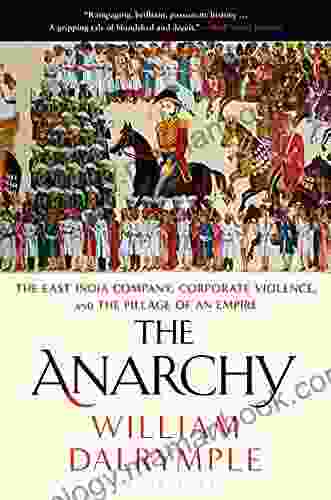
 Isaias BlairThe Anarchy: The East India Company Corporate Violence And The Pillage Of An...
Isaias BlairThe Anarchy: The East India Company Corporate Violence And The Pillage Of An... Ted SimmonsFollow ·18.2k
Ted SimmonsFollow ·18.2k Darrell PowellFollow ·9.7k
Darrell PowellFollow ·9.7k Vladimir NabokovFollow ·6k
Vladimir NabokovFollow ·6k Rex HayesFollow ·4.8k
Rex HayesFollow ·4.8k George R.R. MartinFollow ·11.8k
George R.R. MartinFollow ·11.8k Theo CoxFollow ·2.2k
Theo CoxFollow ·2.2k Terence NelsonFollow ·5.5k
Terence NelsonFollow ·5.5k Carl WalkerFollow ·15.9k
Carl WalkerFollow ·15.9k

 Vernon Blair
Vernon BlairThe Woman I Met in My Dream: An Unforgettable Night of...
As the veil of night...

 Carlos Fuentes
Carlos FuentesThe Ultimate Guide to Healthy Eating for Toddlers: Meal...
As a parent of a...

 Peter Carter
Peter CarterInside My Autistic Mind: A Journey of Self-Discovery and...
Autism spectrum disorder (ASD) is a...

 Isaac Asimov
Isaac AsimovA Journey Through Jane Austen's Literary Masterpieces:...
Jane Austen, the renowned English...

 Hank Mitchell
Hank MitchellAdvancements in Textiles: Science and Technology by...
The textile...
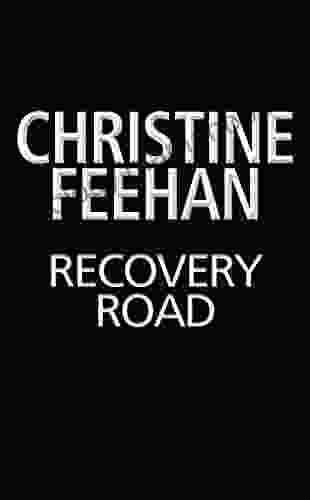
 Troy Simmons
Troy SimmonsRecovery Road: An Odyssey of Hope and Redemption by...
Recovery Road is a...
4.6 out of 5
| Language | : | English |
| File size | : | 47513 KB |
| Text-to-Speech | : | Enabled |
| Screen Reader | : | Supported |
| Enhanced typesetting | : | Enabled |
| Word Wise | : | Enabled |
| Print length | : | 768 pages |


